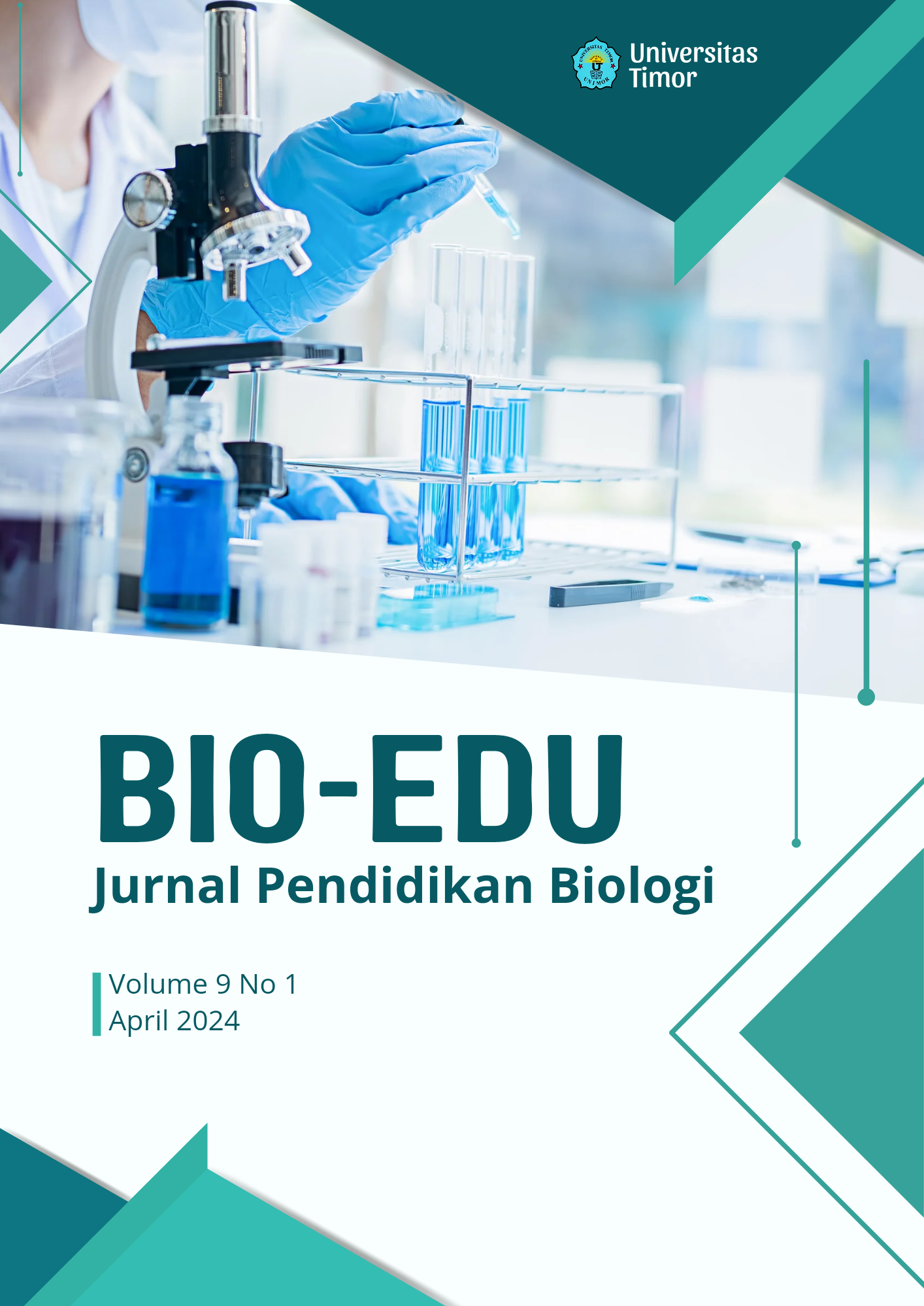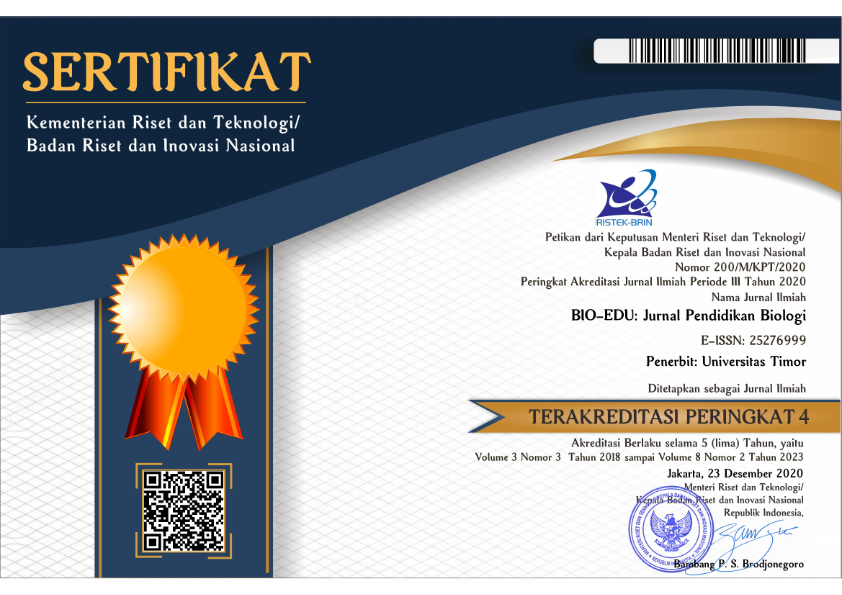Prevalensi dan Intensitas Ektoparasit pada Sapi yang dipelihara secara Intensif dan Semi Intensif di Kecamatan Pangkalan Susu Sumatera Utara
DOI:
https://doi.org/10.32938/jbe.v9i1.6354Keywords:
Beef cattle, Ectoparasites, Intensive, Semi-intensiveAbstract
Beef cattle have a major role in meat production and meet animal protein needs. This study aims to identify and calculate the prevalence rate and level of ectoparasite infestation in beef cattle raised intensively and semi-intensively in Alur Measles village and Pangkalan Susu sub-district agricultural village. This research uses exploratory methods with tools such as sweep nets and tweezers. Sweep nets are used to catch ectoparasites flying around the cow’s body, while tweezers are used to pick up ectoparasites attached to the cow’s body. There are four families of ectoparasite consisting of four different types. The most common type of ectoparasite found is Rhipicephalus microplu. The highest attendance rate was seen in semi-intensively raised cows, with the ectoparasite Rhipicephalus microplus present rate reaching 100% which can be categorized as “always present”. Meanwhile, the lowest attendance rate was seen in intensively reared cattle, with the ectoparasite Chryomya megacephala present at a rate of 26%, which can be categorized as ”frequently present”. The highest infestation rate also occurred in semi-intensively raised cattle, with an Rhipicephalus microplus infestation rate of 6.88, which can be categorized as “moderate”. Meanwhile, the lowest infestation rate occurred in intensively raised cows, with an infestation rate of 0.28, which can be categorized as “very low”I.
Downloads
Published
Issue
Section
License
The Authors submitting a manuscript do so on the understanding that if accepted for publication, the copyright of the article shall be assigned to BIO-EDU: Jurnal Pendidikan Biologi and Departement of Biology Education, Universitas Timor as the publisher of the journal. Copyright encompasses rights to reproduce and deliver the article in all form and media, including reprints, photographs, microfilms, and any other similar reproductions, as well as translations.
BIO-EDU journal and Departement Biology Education, Universitas Timor, and the Editors make every effort to ensure that no wrong or misleading data, opinions, or statements be published in the journal. In any way, the contents of the articles and advertisements published in BIO-EDU are the sole and responsibility of their respective authors and advertisers.
Users of this website will be licensed to use materials from this website following the Creative Commons Attribution-ShareAlike 4.0 International License.



















